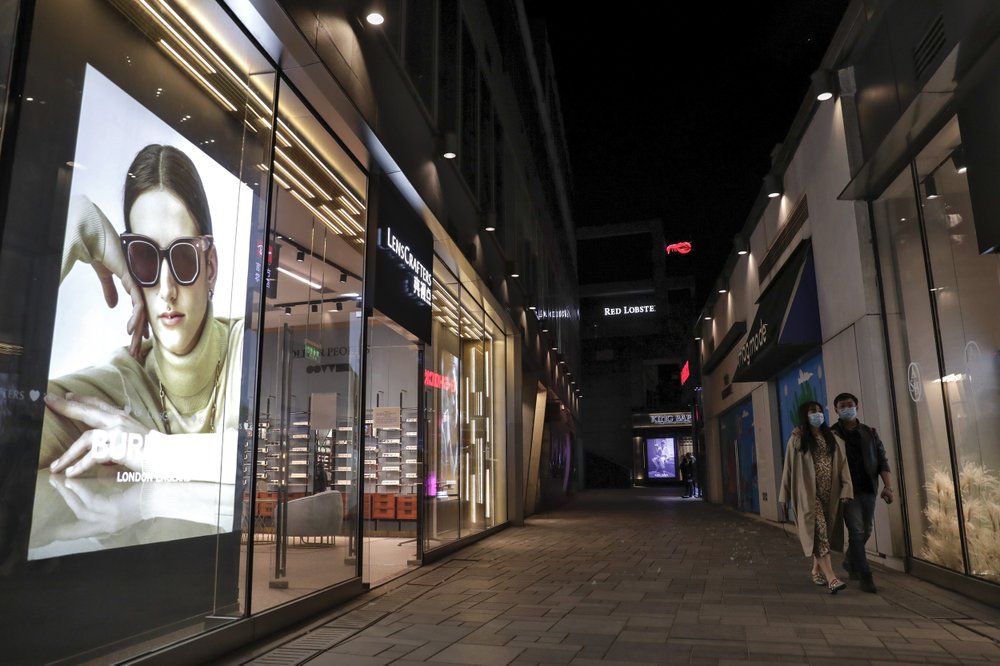
BEIJING (AP) — Factory output rose in April as China’s virus-battered economy reopened but job losses depressed consumer spending, a key driver of growth, challenging the ruling Communist Party’s push to revive normal activity.
Investment in factories and other fixed assets also improved as businesses reopened after China’s deepest economic slump since at least the 1960s, official data showed Friday.
China, where the pandemic began in December, was the first economy to shut down to fight the virus and the first to start reopening in March. Automakers and some other manufacturers say production is back to normal, but retailing and other industries are struggling.
Friday’s report “shows only small and gradual improvements in economic activity,” Iris Pang of ING said in a report.
The ruling party has handed out shopping vouchers, cut taxes and promised entrepreneurs low-interest loans after first-quarter activity shrank 6.8 percent from a year earlier.
Still, forecasters expect little to no economic growth this year.
Factory output rose 3.9 percent in April from a year earlier, an improvement over the previous month’s 1.1 percent contraction. Manufacturers have been hurt by weak demand for exports in the United States, Europe and other major markets that have closed to fight the virus.
Consumer spending, a major economic driver, shrank 7.5 percent from a year earlier, depressed by widespread job losses. That was an improvement on March’s 15.8 percent contraction but still dragged on overall growth.
Economic growth “now relies largely on domestic demand,” said Tommy Wu of Oxford Economics in a report. “Improvement in consumption momentum is likely to continue, albeit from a weak starting point.”
The scale of job losses as retailers, restaurants and export-driven factories close due to lack of demand is unclear but private sector analysts say the total could run as high as 30 million.
Investment in fixed assets, the second-biggest driver of economic growth, shrank by 10.3 percent from a year ago but that was better than the first quarter’s 16.1 percent contraction.
Consumer inflation eased to 3.3 percent over a year ago from March’s 4.3 percent, but food costs surged 14.8 percent. That was driven by a 96.9 percent jump in the price of pork due to an outbreak of African swine fever that has disrupted supplies.
Exports, reported earlier, rose 3.5 percent in April over a year ago, rebounding from the previous month’s 13.3 percent contraction. But forecasters warn exporters are likely to face a second dip as foreign buyers cancel orders.
“This will become more obvious in May as global demand weakens in response to high unemployment in the US, UK and European economies,” said ING’s Pang.
April auto sales, reported this week, fell 2.6 percent from a year earlier, but that was better than March’s 48.4 percent contraction in the industry’s biggest global market.
___
Image: In this April 13, 2020, file photo, a couple walks through the capital city’s popular shopping mall in Beijing. Factory output rose in April as China’s virus-battered economy reopened but job losses depressed consumer spending, a key driver of growth, challenging the ruling Communist Party’s push to revive normal activity. Investment in factories and other fixed assets also improved as businesses reopened after China’s deepest economic slump since at least the 1960s, official data showed Friday, May 15, 2020. (AP Photo/Andy Wong, File)




